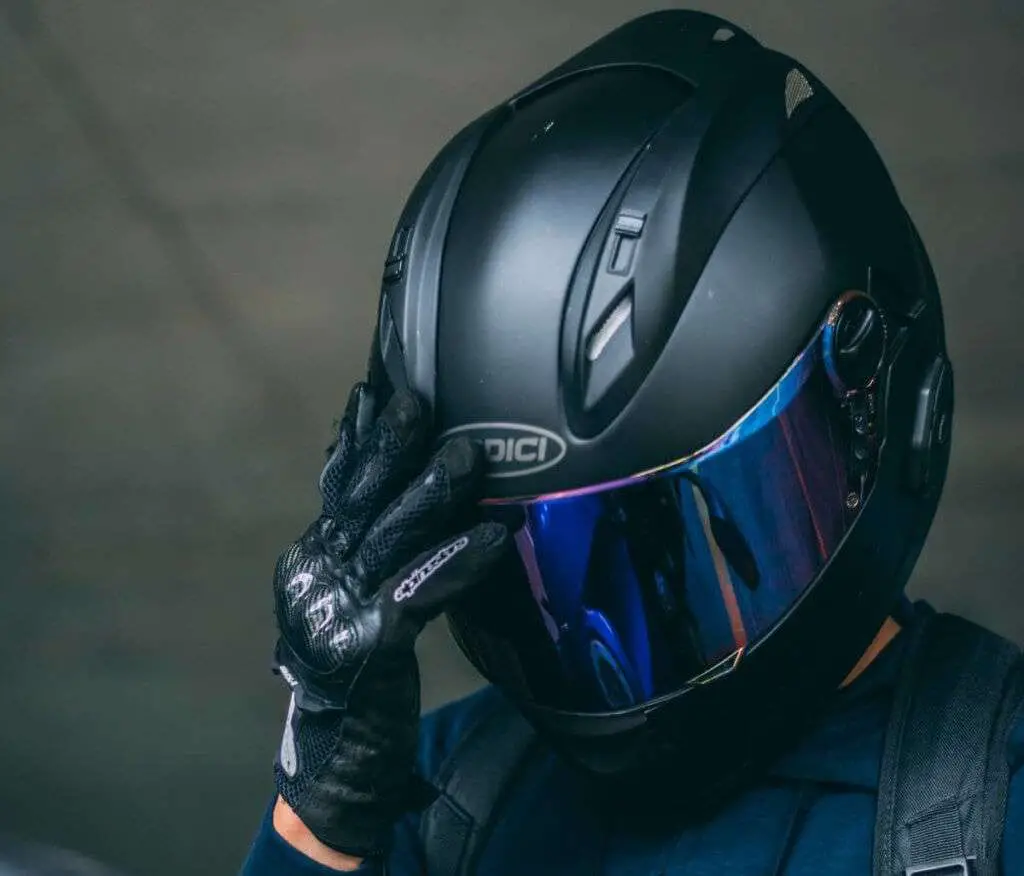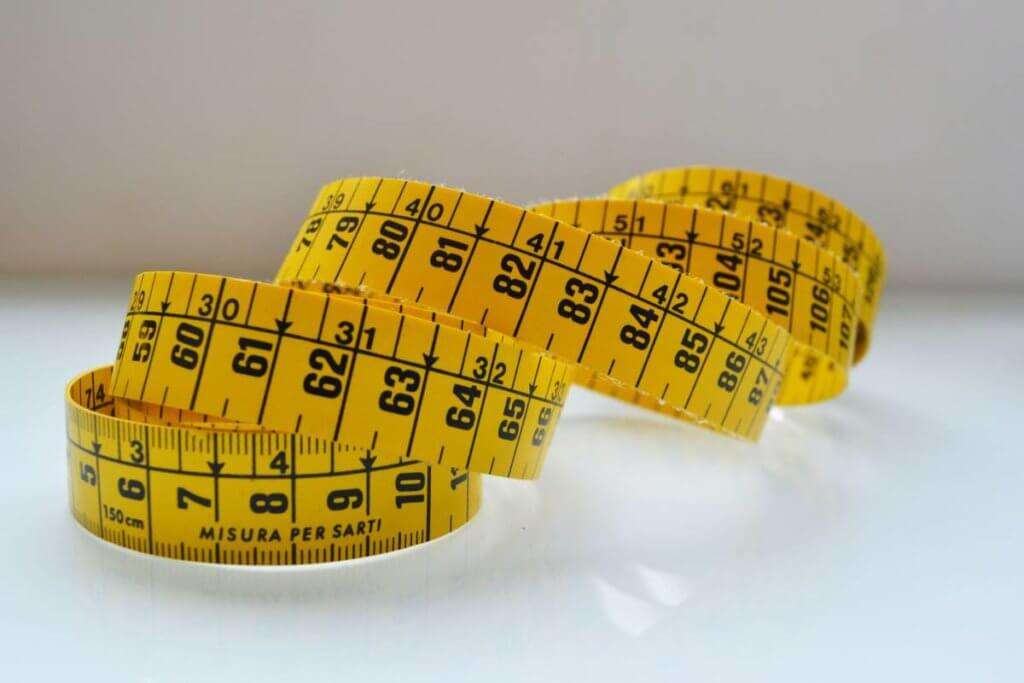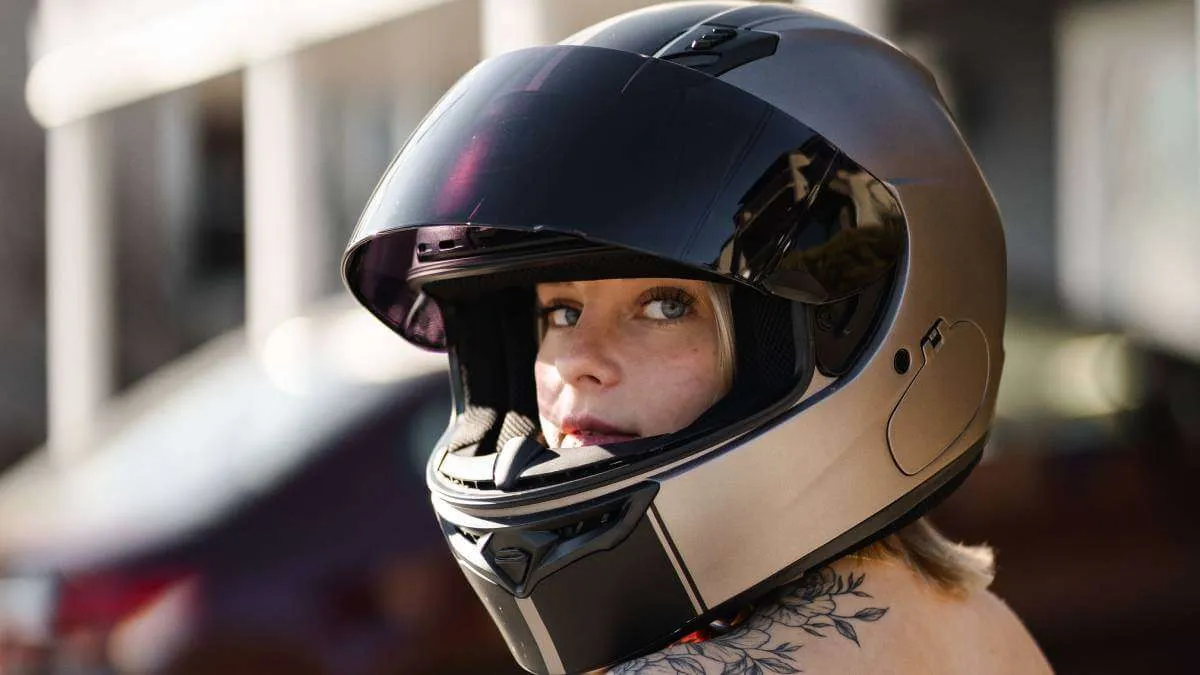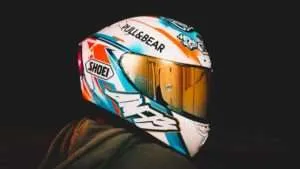Contents
A helmet is used to protect the heads of people while performing activities that could result in head trauma if something goes wrong; this is especially important for those who ride motorcycles. However, wearing a bike helmet may not be so appealing if they always look unnecessarily large or dorky.
Why does your bike helmet look huge? Motorcycle helmets look huge because of the multiple layers that are required to protect a person’s head in the event of a bike crash or other traumatic accident. However, in some cases, a helmet may appear large because it is the wrong size for your head.
If the helmet fits properly, but you don’t like the thicker look, there are thinner helmets you can purchase. If you decide to go down this route, you must know that not all helmets are created equal. On the other hand, if you choose a thinner helmet, you may be putting yourself at risk of being harmed if you end up in an accident.
My Motorcycle Helmet Looks Huge: Why?

The helmet is the most crucial piece of safety equipment that all bikers need to purchase before ever riding their motorcycle. In the event of an accident, your helmet is what protects the brain from being damaged. It is for this reason that the safest helmets are usually large and have thick padding. Another reason why your helmet may look huge is that it may not actually be the right size for you.
Finding the Right Helmet Size
While it is likely that your helmet is big for your protection, it is also possible that your helmet is too large for your head. No matter what you use your helmet for, having the right size is crucial. When riding on a motorcycle, a properly fitting helmet can be all that stands between the biker and an untimely end! So, how do you find the right size?
You may find the answer is a bit more technical than you might imagine. There are four main factors to consider when it comes to determining the correct helmet size: type, shape, size, and fit.
Measuring Your Head Size

Naturally, if you want to have the right helmet size, you’ll need to measure your head first. For this, you will need a seamstress measuring tape. The first step is to wrap the tape measure around the fullest part of your head; this should be about half an inch above your eyebrows. (Taking this measurement will be most comfortable to do with another person’s help.)
The next step is to compare your measurements to a helmet sizing chart on the page webpage you plan on purchasing your helmet from. If you are uncomfortable with purchasing your helmet online and prefer to try it on first, you can also buy them at sporting goods stores and motorcycle shops in your area.
Helmet Shape

Helmet shape is a more significant issue than a new rider may realize. The shape of your helmet compared to the shape of your head must be considered to size the helmet correctly. Helmet manufacturers design their helmets for three specific head shapes:
- The first is known as a Long Oval Helmet. These helmets are created for people whose head is longer from their forehead to the back of their heads.
- The second is a Round Oval Helmet. This helmet is created for the person whose head is almost equally as long from front to back as it is from side to side.
- The final helmet shape is known as the Intermediate Oval Helmet. It is shaped for a person whose head is only slightly longer from front to back (forehead to the back of their head) as it is from side to side (ear to ear); this is the most common head shape, and for this reason, most helmets fall into this category.
Correct Helmet Fit

When you first put on your helmet, it should feel slightly snug. Most of the interior should meet your face, without causing discomfort or pain. The helmet should NOT create hotspots on your face or skull, which means that the interior of the helmet should not put pressure on any specific points on your face or scalp.
The helmet should sit evenly on the head. It should leave room for peripheral vision so that you can see in front of and on each side of you. Once you put the helmet on, one trick to see if your helmet fits properly is to take two fingers and try to fit them into the helmet. If they fit into the helmet too easily or there is more space beyond two fingers, you might want to try a smaller size. If the helmet fits but feels too snug, certain helmets allow a change in cheek pads for a better, more comfortable fit.
The Best Non-Dorky, Cool Bike Helmets
You should not solely base your helmet purchase on “getting a good deal” or “looking cool.” It is best to make your purchase based on safety and fit. However, there is a way you can get the best of both worlds: a helmet that not only looks great but also effectively protects your head while being the correct size.
There are several types and styles of motorcycle helmets. They all offer different advantages to match each rider’s needs. There are three types of helmets to browse, and Amazon sells them all at great prices:
The Best Full-Face Helmets
A full-face helmet offers the clear advantage of added protection to your entire face rather than just the top of your head. It also provides better protection from the sun, wind, rain, bugs, and the occasional rock or two that ricochets off truck tires. The only real disadvantage to a full-face helmet is that they can limit airflow to your face in warmer weather.
- GLX Unisex-Adult GX11 Compact Lightweight Helmet
- 1Storm Motorcycle Modular Helmet
- Typhoon K77 Full Face Motorcycle Helmet
The Best Open-Face Helmets
An open-face helmet has its own advantages that prove useful. The most important of which is that it provides you with the ability to hear. In the event of an accident, you would be able to listen to screeching tires and be forewarned. Another small advantage is that in the summertime you can feel the airflow on your face.
The distinct disadvantage of using an open-faced helmet is that your face is not as protected as it is with a full-faced helmet. Other cons include that you need to wear glasses to protect your eyes and some form of mask to prevent sunburn and swallowing bugs.
The Best Half Shell Helmets
Another type of helmet option is the half shell helmet. The half shell helmet is safer than no helmet at all but not by much. When an accident occurs, this helmet only protects riders from traumatic brain injuries 36.8% of the time; therefore, it is the least protective helmet. As such, it should never be worn by inexperienced riders.
- VCAN Cruiser Patriotic Eagle USA Graphics
- Vega Warrior Motorcycle Helmet
- Daytona Motorcycle Half Helmet
Final Thoughts
You are free to choose the style of helmet you purchase, but certain helmets protect your head better than others. For the best protection, the full-face helmet is the best option. However, if you are claustrophobic or worried about getting too hot in the summer, the open-face helmet still provides a suitable level of protection.
The least protective helmet is the half shell helmet and should only be worn by the most experienced riders. However, in the event of an accident, even the most experienced riders are still at risk when using half shell helmets. They offer no advantages other than style and are only approximately 40% likely to protect the rider for traumatic brain injuries. With that said, when it comes to purchasing the right helmet for you, it is always better to choose safety over style, every time.
References:
https://motorbikewriter.com/open-versus-full-face-and-modular-helmets/
https://www.upnorthsports.com/HelmetSizingChart.html
https://starofmysore.com/half-helmets-legal-isi-certification-says-bureau-indian-standards/





 So You Dropped Your Bike and It Won’t Start, Now What?
So You Dropped Your Bike and It Won’t Start, Now What?  Can you Wear a Snowmobile Helmet on a Motorcycle?
Can you Wear a Snowmobile Helmet on a Motorcycle?  How to Wrap a Motorcycle Helmet in 15 Steps
How to Wrap a Motorcycle Helmet in 15 Steps  ILM Full Face Motorcycle Helmet Review Round-Up: A Helmet I Can’t Possibly Recommend
ILM Full Face Motorcycle Helmet Review Round-Up: A Helmet I Can’t Possibly Recommend 